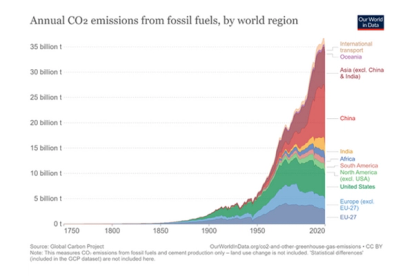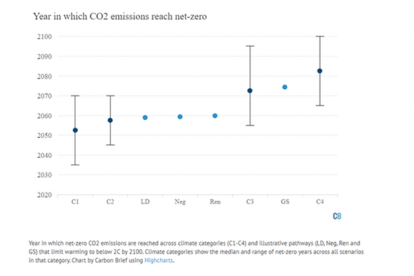
Cultural heritage: Indigenous and cultural heritage values driving sustainable development
by Flavia Kiperman
View post

This blog post is the third in a four-part series unpacking the key pieces of information from the IPCC AR6 reports. Part one - The latest climate science from the IPCC. Part two - Key highlights from the IPCC Impacts, Adaptation and Vulnerability report.
The Intergovernmental Panel on Climate Change (IPCC) produces a set of major reports every seven years summarising the latest climate science and its implications for human society. It is currently in its sixth assessment report cycle (AR6).
In April 2022, the IPCC released the third report in the series, AR6 Climate Change 2022: Mitigation of Climate Change. This report explained what is required to limit global warming to below 1.5°C-2°C.
The good news (finally!), is that the report sets out a series of measures that companies, investors, governments and individuals should take to bring temperatures down to a safe level. This echoes the 2021 Net Zero by 2050 roadmap published by the International Energy Agency (IEA).
The headline statement from the report is that global greenhouse gas emissions must peak by 2025 to give the world a chance of limiting future heating to 1.5°C above pre-industrial levels. Global emissions have yet to peak, as shown by the data from 2020 in the chart below.

Annual CO2 emissions from fossil fuels, by world region
In simple terms, it is still technically feasible to bring temperatures down to 1.5°C-2°C. However, monumental action will be required, which is currently not happening.
For example, the IEA report states that for this scenario to be viable, “beyond projects already committed as of 2021, there are no new oil and gas fields approved for development in our pathway, and no new coal mines or mine extensions are required.” Whereas, in reality, there are many new fossil fuel projects being built around the world.
Key highlights from the report on scenarios and trajectories:
Important takeaways for TCFD-aligned climate scenario analysis and climate change risk assessments
The Network for Greening the Financial System (NGFS) “Current Policies” scenario, which falls under the “Hot House World” category, closely tracks RCP6.0, and is representative of the current policy trajectory. The chart below shows a comparison.

Absolute change in air temperature in Europe
However, the latest IPCC report confirms that the use of RCP8.5 for adaptation planning as a high-end warming scenario is logical, particularly because of the potential for climatic feedback loops to increase global temperatures.
Measures required to limit global warming

Year in which CO2 emissions reach net-zero
For support with climate change risk assessments, climate scenario analysis, developing your organisation’s climate strategy and capacity or responding to the TCFD reporting requirements please contact us.

by Flavia Kiperman

by Jasper Schrijvers , Matthew Hoare

by Clodagh Connolly, Nicola Inge, Andres Schottlaender